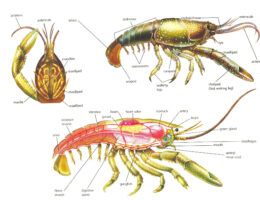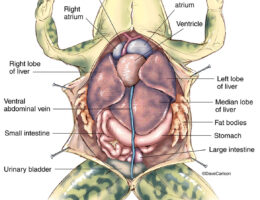A typical salmon has the following labeled body parts in its external anatomy:
- Dorsal fin: The dorsal fin is located on the top of the fish and helps with stability and maneuverability in the water.
- Caudal fin: The caudal fin, or tail fin, is used for propulsion and helps the fish swim forward.
- Anal fin: The anal fin is located on the ventral side of the fish near the anus and is used for stability and steering.
- Pectoral fin: The pectoral fins are located on the sides of the fish’s body and are used for steering and stopping.
- Pelvic fin: The pelvic fins are located on the ventral side of the fish and help with stability and maneuverability.
- Adipose fin: The adipose fin is a small fin located between the dorsal fin and the tail fin. Its purpose is not well understood but it may help with balance or sensory functions.
- Mouth: The mouth of a salmon is used for feeding and is equipped with sharp teeth for capturing prey.
- Gills: Salmon use gills to extract oxygen from water. They are located on the sides of the fish’s head and are covered by a bony flap called the operculum.
- Eyes: The eyes of a salmon are located on either side of the head and are used for vision.
- Scales: Most salmon have scales that protect their body from predators and parasites. The scales come in a variety of shapes and sizes and can be used to identify different fish species.
- Lateral line: The lateral line is a sensory organ that runs along the side of the fish’s body. It helps the fish detect changes in water pressure and vibrations, which can be useful for detecting prey or avoiding predators.
- Swim bladder: The swim bladder is a gas-filled organ that helps the fish control its buoyancy. By regulating the amount of gas in the swim bladder, the fish can stay at a particular depth in the water column.
Overall, these labeled parts of a salmon’s anatomy work together to help it survive and thrive in its aquatic environment, where it hunts for food and migrates to spawning grounds to reproduce.



